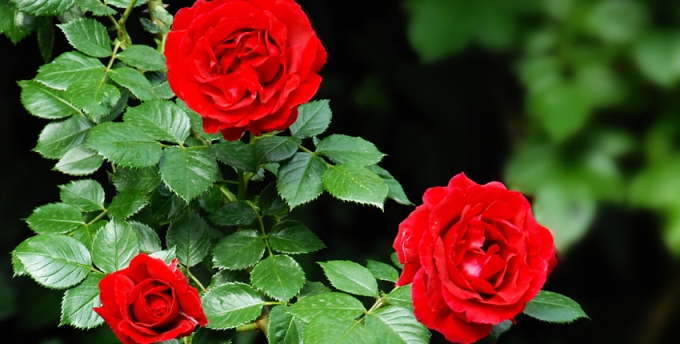It is the time you have wasted for your rose that makes your rose so important.
Antoine de Saint-Exupéry, The Little Prince
Why roses?
Roses are the most traditional, yet such beautiful and even breathtaking flowers everyone would love to grow in their garden. Their grace and delicate fragrance have always embodied love and romance. Vulnerability and tenderness of rose petals, the strength and tenacity of their thorns has been adored for hundreds and thousands of years. Yet, the rose continues to take the first place on the flowers’ pedestal, being quite universal flower, which will never go out of fashion. One single rose embodies war and peace, love and sorrow, beauty and sadness, subtlety and even ferocity. It’s like an incredibly beautiful and exalted woman, who’s aware of her beauty and knows how to protect herself. But, she also seeks not only admiration and compliments, but also real feelings and love. Which, unfortunately, she hardly ever gets. Since only rare people may approach her without hurting themselves and the rose.
Rose bushes are awesome garden flowers. In fact, they are the centerpiece of any flower garden, whether they’re climbing or ordinary tall bushes with individual buds, which make perfect cut flowers. These bushes come in a diverse colors and shades of flowers, heights and density of the plant. The size of the bud may vary in different kinds of roses as well. These factors allow creating interesting floral arrangements and combinations out of roses only or together with other flowers.
There’re also plenty types of roses, which feature different shapes and colors of flowers. It’s also possible to find rose bushes that are adapted to growth in various weather conditions and climates. Some of them may require more maintenance, but others are quite easy to take care of.
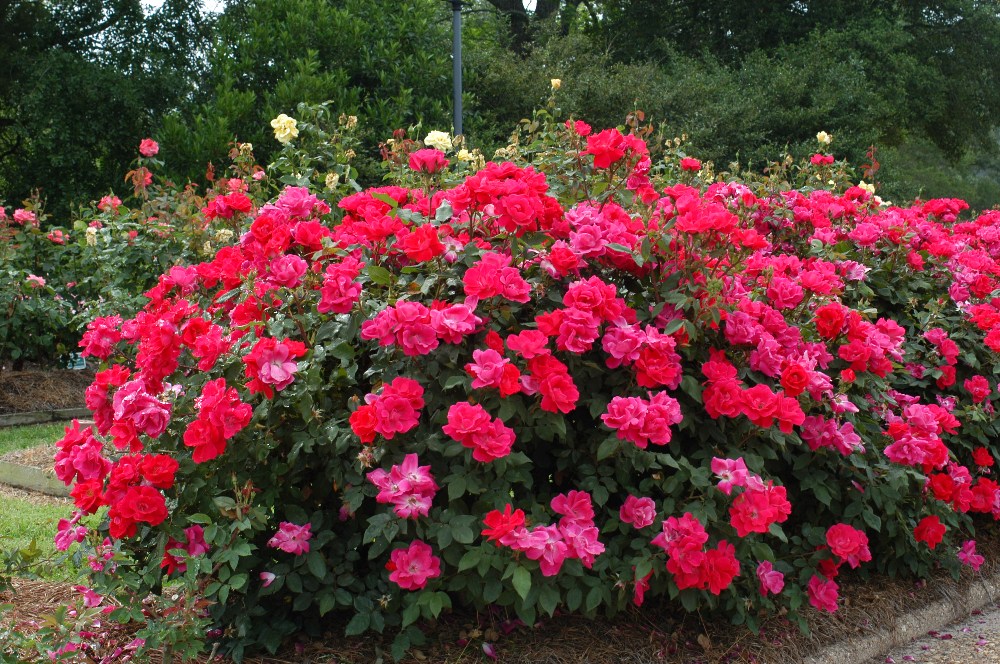
However, most beginning gardeners are often scared to plant roses in their gardens, as they’re not sure if they can do the job properly and keep the plants alive. Some people prefer hiring a qualified gardener to take professional care and provide proper maintenance for their flower-gardens. It’s a good option if you want to have a beautiful flourishing garden and don’t have time to grow and plant it yourself. It’s also good if you don’t really know how to do that or if you’re one of those unlucky people who just can’t grow any plants no matter what. But in fact, rose bushes are not too whimsical plants to look after. So, if you’re willing to enjoy the gardening process on your own, you can totally learn how to do that.
When it comes to growing rose bushes, there’re only a few things a gardener should ensure in order to end up with beautiful blossoming roses. First of all, it’s necessary to choose those kinds of roses, which suit the type of climate you live in and which are accustomed to growing in certain types of land. Just do your research, check in with the regional guide of roses and pick out those bushes, which will certainly grow well where you live.
Decide, whether you’re willing to purchase bare-root roses or the ones, which come in containers. Your choice depends on the time you plan to plant the bushes and result you want to achieve. The matter is that bare-root ones never come with flower buds on them. So, you won’t get already developed rose flowers once you plant the bush. However, this type of rose transplant may be planted much earlier than container-grown ones. They’re usually transplanted into the land 6-4 weeks before the normal frost date, typical for the local area, but not later than 2 weeks after that time. This allows the bush to develop a strong root system by the time the full-blown spring comes. So, the plant will be much stronger and healthier in the long run.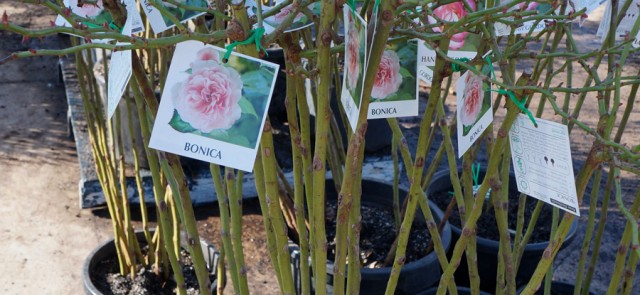
Meanwhile, container-grown bushes usually come with rose buds. So, you’ll end up with ready-to-bloom flowers once you plan them. But, you should choose the appropriate time to do that, as these transplants aren’t able to cope with spring frosts. And, sometimes it’s quite difficult to predict when the frost season is completely over, as in spring low night temperatures may suddenly kick in and ruin your young and tender rose bushes at any time.
You may also consult with an experienced local gardener to find out which kinds of bushes you should better pick out and what the best way to plant roses is. If you don’t personally know a gardener, you may find one on HireRush.com. Just specify the search to your local area, scroll through the gardeners’ profiles and call one of them directly from the site.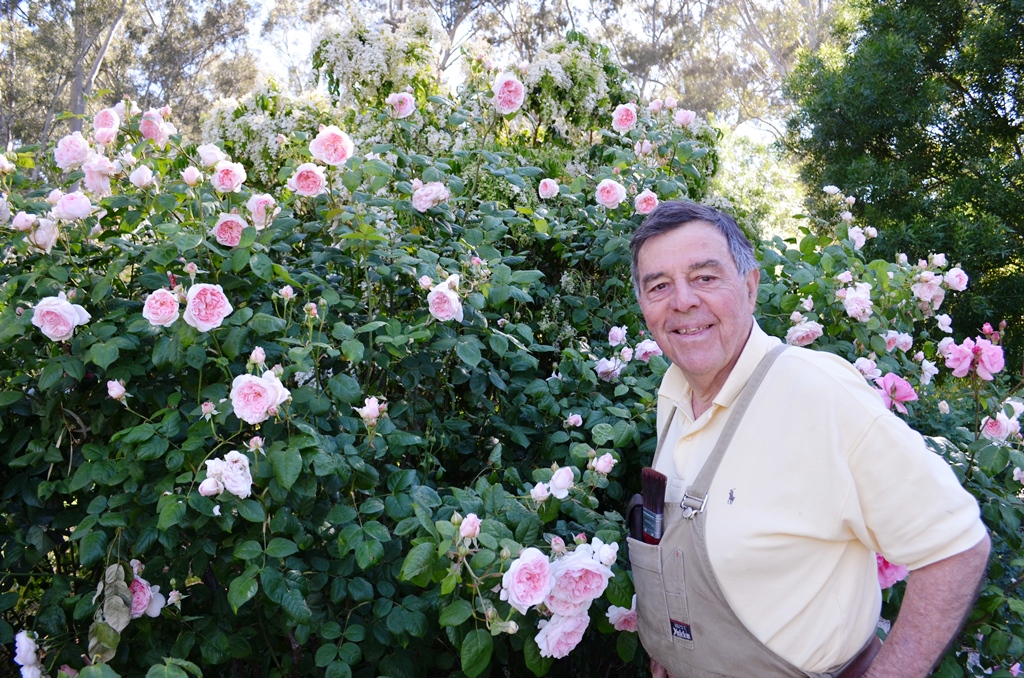
Consult with a professional local gardener
No matter what type of bushes you choose, you have to check the ‘health’ of transplants and their disease resistance before purchasing the transplants. Then, it’s important to make sure that your bushes will have enough space to grow and thrive. Sunny and wind-protected spot with good drainage should be ensured as well. If you live in drier climates, it’s better to provide some shade in order to protect the bushes from the burning sunlight. And finally, it’s necessary to figure out the proper way of how to plant roses to give your bushes the right start.
Those preparation steps, combined with proper and consistent rose care and maintenance, are your keys to successful rose growing. And now, let’s see how to plant rose bushes correctly.
Steps to plant a rose bush
Transplanting roses is not as difficult as many beginning gardeners imagine. But you definitely have to follow the procedure, taking into consideration local rose growing conditions.
Step 1. Prepare you tools and materials
You’ll need some fertilizer and mulch to feed the roses and give them enough energy to grow and protect their roots in case of low temperature. Mulch will also reduce water evaporation, which will keep the moisture for bushes. Obviously, you’ll have to bring your rose bushes, as well as rose planting soil mix or compost. Besides, you’ll need a pair of gloves, a shovel, a pot filled with water, a shovel and pruning shears.
Bring all that good stuff to the planting site not to run to grab something in the middle of the process.
Step 2. Dig a hole
Take a shovel and prepare the hole, which should be a little bit deeper than the plant’s roots with earth, attached to them. This way you’ll be able to plant roses better. Their roots will be completely covered and will have damp land to grab onto and gain a foothold on the spot. Remember, that rose bushes should grow at least 2-3 feet apart, so make sure to keep such distance when planting the bushes. If several rose transplants came in one pack, separate their roots carefully and still plant them in different holes to give each rose the room to grow.
If you plant bare-root rose bushes, they’ll usually have a little bump a little bit above their roots. It’s called a graft. Depending on the area you live in, you’ll have to cover the actual graft with several (2-4) inches of soil to ensure proper winter protection. This factor will also influence the depth of the hole.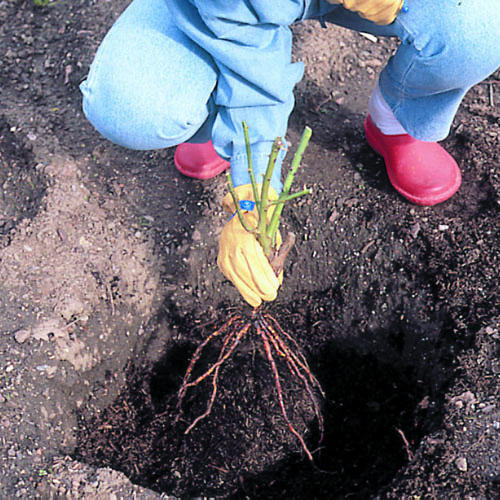
Step 3. Incorporate compost or rose planting mix into the soil
Mix in the soil in the hole you’ve just prepared with one of these fertilized compounds. One third of a cup of this compound for a big rose bush and one fourth of it for a smaller one will be just enough. Then, create a little soil mountain at the bottom of the hole.
Step 4. Place the rose plant into the hole
Take your plant and put its roots into the soil mountain you’ve already created. I’ve already described how low the rose bud onion should be planted in areas with cold winters. But, the method is completely different for areas, where it’s relatively warm or even hot all year around. If that’s your case, it’s better to place the rose plant the way, so that its bud point is a little bit (1-2 inches) above the soil.
Step 5. Cover the roots of a rose bush
Support the plant with your hand and cover the roots with the soil mixture from the hole’s bottom. Add the soil you’ve dug out from the hole to finish the rest of it. Be careful not to hurt your hands with the rose’s thorns.
Tap the land around the bush to ensure that it supports the rose bush and makes it stay in place. Some professional gardeners suggest adding some minerals like empsom salt when you fill the hole up to the middle to improve the plant’s growth enrich its green color and make it consume the soil’s nutrients better. But, it’s completely optional.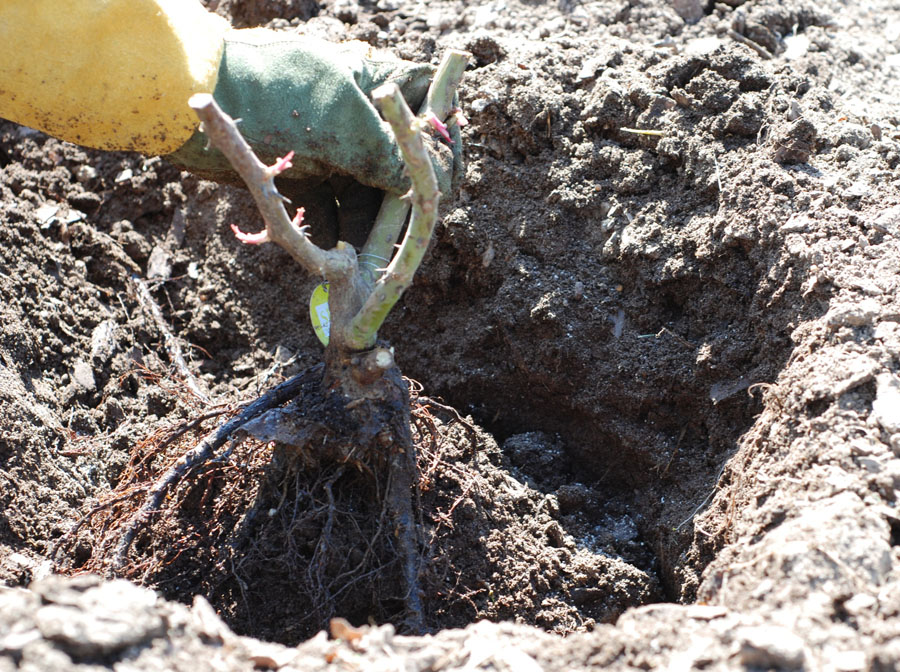
Step 6. Water the land around the rose bush
Water the hole slowly to let the water soak deep into the soil. Wait until it disappears from the hole’s top and water it a little bit more. If you’ve not used any fertilizers, minerals, rose planting mixture before (as shown in steps 3 and 5), you may add the soluble ones into the water.
Gardeners recommend trimming the rose bush. So, cut their canes to make them about 8 inches long.
Step 7. Create the above-ground mound to protect the rose bush
Once the rose bush is planted and watered, you can proceed to the last stage of planting a rose bush. Take the soil you’ve dug out of the hole and a make mound around the plant to protect the rose bush and its roots from low temperatures and retain the moisture inside the bush. Gardeners say that if you cover the soil mound with some mulch, you’ll improve this simple protection system even more. Make a little groove in the soil with your hand to help the bush catch the rain water and you’re done!
